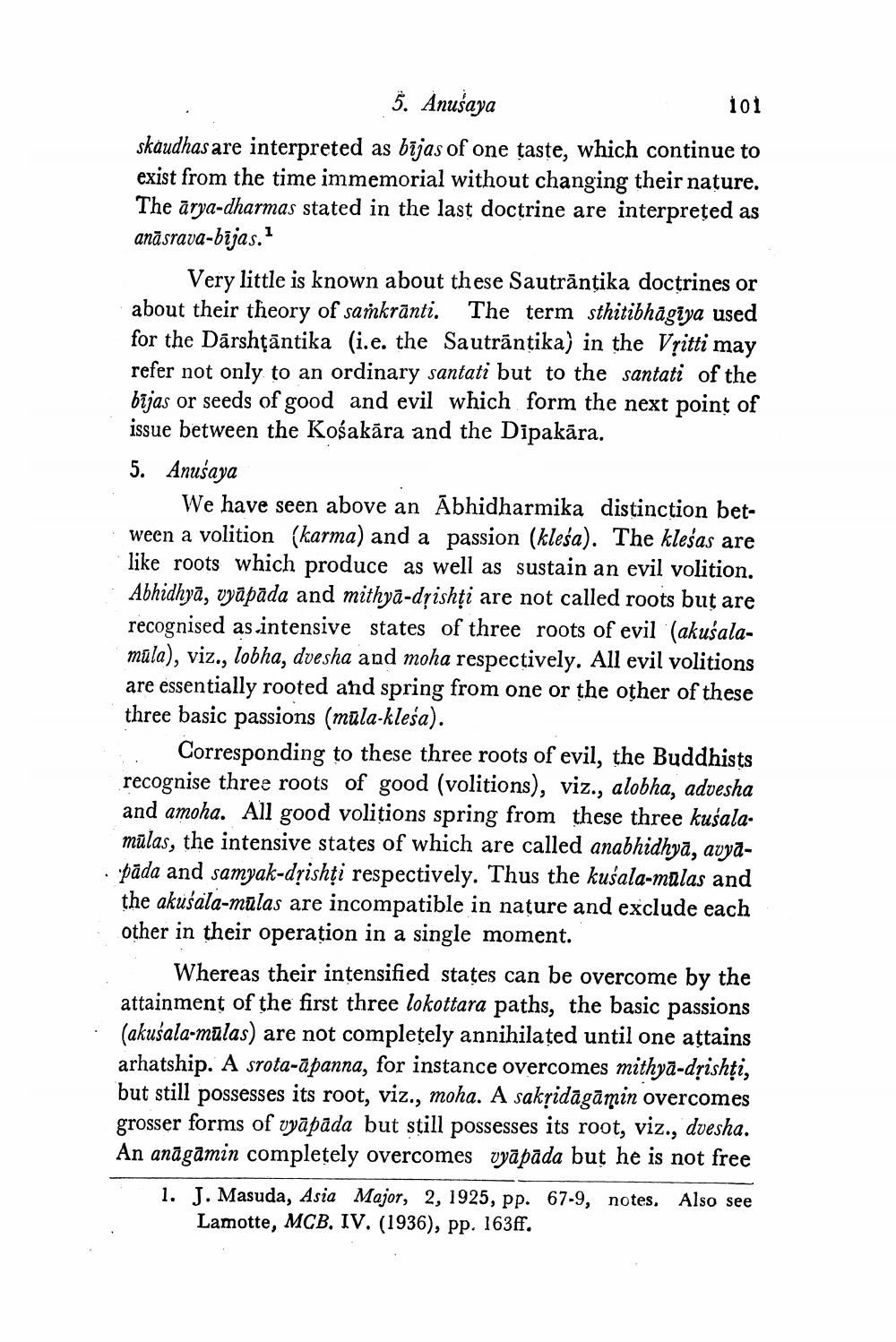________________ 101 5. Anusaya skaudhas are interpreted as bijas of one taste, which continue to exist from the time immemorial without changing their nature. The arya-dharmas stated in the last doctrine are interpreted as anasrava-bijas." Very little is known about these Sautrantika doctrines or about their theory of samkranti. The term sthitibhagiya used for the Darshtantika (i.e. the Sautrantika) in the Vtitti may refer not only to an ordinary santati but to the santati of the bijas or seeds of good and evil which form the next point of issue between the Kosakara and the Dipakara. 5. Anusaya We have seen above an Abhidharmika distinction between a volition (karma) and a passion (klesa). The klesas are like roots which produce as well as sustain an evil volition. Abhidhya, vyapada and mithya-dsishti are not called roots but are recognised as.intensive states of three roots of evil (akusalamula), viz., lobha, dvesha and moha respectively. All evil volitions are essentially rooted and spring from one or the other of these three basic passions (mula-klesa). Corresponding to these three roots of evil, the Buddhists recognise three roots of good (volitions), viz., alobha, advesha and amoha. All good volitions spring from these three kusalamulas, the intensive states of which are called anabhidhya, avyapada and samyak-d'ishti respectively. Thus the kusala-malas and the akusala-mulas are incompatible in nature and exclude each other in their operation in a single moment. Whereas their intensified states can be overcome by the attainment of the first three lokottara paths, the basic passions (akusala-mulas) are not completely annihilated until one attains arhatship. A srota-apanna, for instance overcomes mithya-drishti, but still possesses its root, viz., moha. A saknidagamin overcomes grosser forms of vyapada but still possesses its root, viz., dvesha. An anagamin completely overcomes vyapada but he is not free 1. J. Masuda, Asia Major, 2, 1925, pp. 67-9, notes. Also see Lamotte, MCB, IV. (1936), pp. 163ff.




